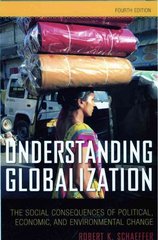Question
1.This is for the Farm article. Farm CHICAGOU.S. farm incomes will hit their lowest point this year since 2009, the U.S. Department of Agriculture said
1.This is for the Farm article.
Farm
CHICAGOU.S. farm incomes will hit their lowest point this year since 2009, the U.S. Department of Agriculture said Tuesday, deepening pain in the Farm Belt amid a multiyear downdraft in commodity prices.
The forecast reflects a painful slump in the U.S. agricultural economy driven by bumper corn and soybean harvests, swelling grain inventories and tougher export competition. Farmers are expecting record supply of corn and soybean harvests again this fall, potentially pushing prices for the nation's two most common crops down even further.
As a result, the USDA said, net farm income will drop 11.5% to $71.5 billion this year, from $80.7 billion in 2015. That would be the third straight annual pay cut for farmers since incomes soared to record levels in 2013.
Futures prices for corn have fallen about 15% so far this year, and prices for the grain are trading at seven-year lows. Wheat prices have tumbled nearly 23% in 2016 to trade at 10-year lows thanks to excess supplies.
Domestic growers also are battling a strong U.S. dollar that has encouraged some of their foreign customers to find grain elsewhere.
Clement weather this summer has fueled expectations that U.S. farmers will harvest the largest U.S. corn and soybean crops in history. The USDA earlier this month projected that the nation's corn crop will reach about 15.2 billion bushels, and the soybean crop about 4.1 billion bushels.
Earlier this month, tractor supplierDeere(Links to an external site.)
& Co.said it would curb output(Links to an external site.)
of its hallmark green tractors and combines as lower crop prices chip away at farmers' appetite for new machinery.
The USDA estimated production expenses for farmers would decline $10.1 billion, or 2.8%, thanks to reduced spending on livestock and poultry-related purchases, as well as on fertilizer and fuel. The declines mark the second straight year of lower farm expenses after spending peaked in 2014, and the second-biggest year-over-year reduction since 2009.
The agency also said government payments to farmers would increase nearly 25% this year to $13.5 billion, due in large part to insurance-like programs that pay growers when prices or revenues fall steeply.
Per the article, the government is instituting a _____________ to the farmer.
Group of answer choices
subsidy
tax
2.This is for the Trade article.
Farm
CHICAGOU.S. farm incomes will hit their lowest point this year since 2009, the U.S. Department of Agriculture said Tuesday, deepening pain in the Farm Belt amid a multiyear downdraft in commodity prices.
The forecast reflects a painful slump in the U.S. agricultural economy driven by bumper corn and soybean harvests, swelling grain inventories and tougher export competition. Farmers are expecting record supply of corn and soybean harvests again this fall, potentially pushing prices for the nation's two most common crops down even further.
As a result, the USDA said, net farm income will drop 11.5% to $71.5 billion this year, from $80.7 billion in 2015. That would be the third straight annual pay cut for farmers since incomes soared to record levels in 2013.
Futures prices for corn have fallen about 15% so far this year, and prices for the grain are trading at seven-year lows. Wheat prices have tumbled nearly 23% in 2016 to trade at 10-year lows thanks to excess supplies.
Domestic growers also are battling a strong U.S. dollar that has encouraged some of their foreign customers to find grain elsewhere.
Clement weather this summer has fueled expectations that U.S. farmers will harvest the largest U.S. corn and soybean crops in history. The USDA earlier this month projected that the nation's corn crop will reach about 15.2 billion bushels, and the soybean crop about 4.1 billion bushels.
Earlier this month, tractor supplierDeere(Links to an external site.)
& Co.said it would curb output(Links to an external site.)
of its hallmark green tractors and combines as lower crop prices chip away at farmers' appetite for new machinery.
The USDA estimated production expenses for farmers would decline $10.1 billion, or 2.8%, thanks to reduced spending on livestock and poultry-related purchases, as well as on fertilizer and fuel. The declines mark the second straight year of lower farm expenses after spending peaked in 2014, and the second-biggest year-over-year reduction since 2009.
The agency also said government payments to farmers would increase nearly 25% this year to $13.5 billion, due in large part to insurance-like programs that pay growers when prices or revenues fall steeply.
Per the article, the government is instituting a _____________ to the farmer.
Group of answer choices
subsidy
tax
3.This is for the Trade article.
Tie in the concept you learned from the production possibility model. If there's more globalization and trading increases then this will ____________________________.
Group of answer choices
Shift outwards the production possibility model
Shift inwards the production possibility model
Not shift the production possibility model but will move on the curve instead.
Step by Step Solution
There are 3 Steps involved in it
Step: 1

Get Instant Access to Expert-Tailored Solutions
See step-by-step solutions with expert insights and AI powered tools for academic success
Step: 2

Step: 3

Ace Your Homework with AI
Get the answers you need in no time with our AI-driven, step-by-step assistance
Get Started


